Liquid Filler: The Complete Buying Guide In 2025
Have you ever come across a liquid filler? Do you know how a liquid filler works? Then you have come to the right place. A liquid filler is a device that provides an incredibly effective and efficient method of packaging liquids. Whether you’re looking to bottle bulk volumes of a certain beverage or even lubricant oils and chemicals, using a liquid filler is the way to go in order to safely package your product with speed and accuracy.
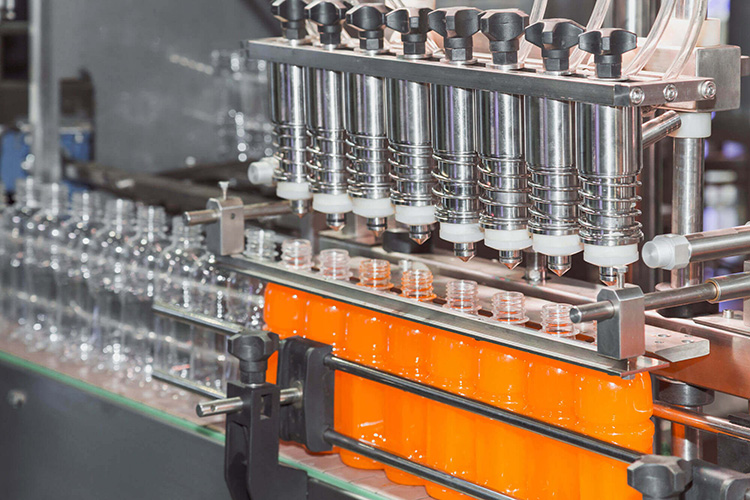
In this blog post, we’ll go over what a liquid filler is, how it works, and the various kinds that are on the market. We’ll also go over its benefits and applications. We will also provide you with advice on how to pick a liquid filler that will work for you. If you’re interested in finding out more about this incredible invention, keep reading!
1.What Is A Liquid Filler?
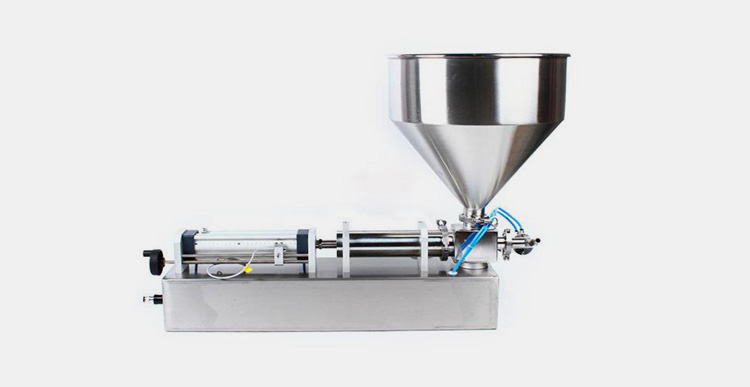
A liquid filler is a device that helps to fill liquid containers of all shapes and sizes, from cans to bottles. It typically consists of a liquid reservoir, an adjustable level control, metering valves, pumps and other sensors for measuring liquid levels.
The liquid is pumped into the container based on the settings set on the liquid filler’s controls. This allows liquid containers to be filled quickly and accurately, with precisely the right amount of liquid.
2.What Are The Components Of A Liquid Filler?
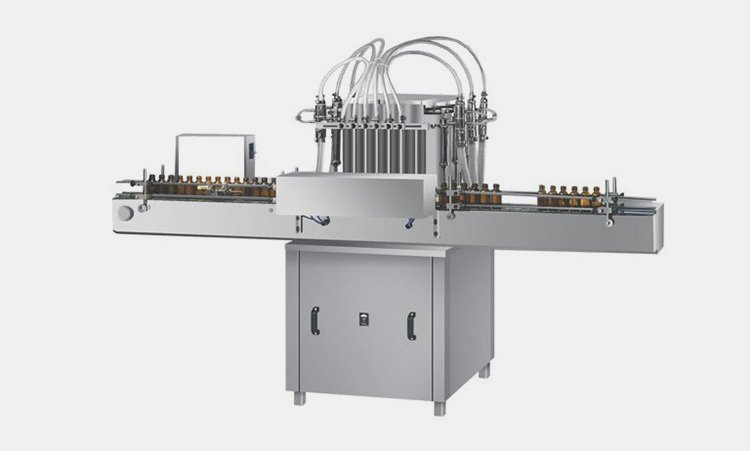
Filling Head
The filling heads are responsible for controlling the liquid flow and accurately dispensing liquid into containers. They can be adjusted to dispense different amounts of liquid.
Hopper
The hopper is where liquid containers are placed and liquid is fed from the supply tanks into it.
Pumps
These pumps move liquid from the supply tanks or other sources of liquid into the filling heads.
Valves
Valves regulate liquid flow from the pumps and controls the volume of liquid that goes into each container.
Sensors
Sensors are used to monitor liquid levels in the hopper and to ensure containers are filled properly.
Control System
The control system helps regulate the liquid filler and ensure that liquid is dispensed accurately. It also has settings to adjust the speed and amount of liquid being dispensed.
Conveyor System
The conveyor system transports filled containers away from the liquid filler once they have been filled with liquid.
Reject Station
This station is responsible for collecting liquid containers with liquid fill defects and other quality issues.
3.What Are The Merits Of A Liquid Filler?
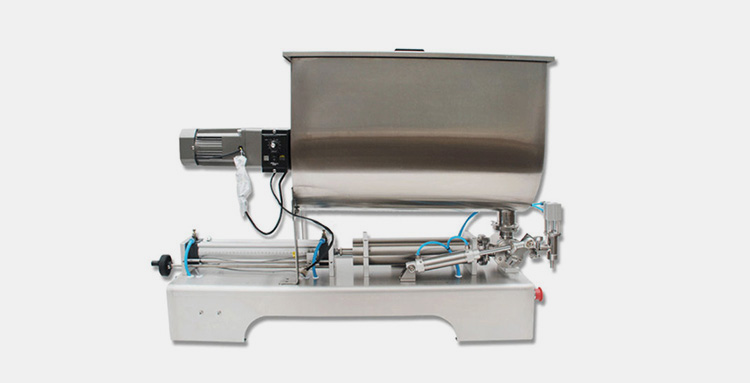
Precision
Liquid fillers are designed with precision in mind thus allowing for exact and consistent fill levels.
Accuracy
Compared to other types of filler machines, liquid fillers provide greater accuracy, because liquid levels can be automatically monitored and regulated thus ensuring accurate fill levels.
Reduced Labor Costs.
Compared to other types of filler machines, liquid fillers can reduce labor cost because they are automated and require minimal human intervention, meaning that fewer people are needed to run the machines.
Versatility
Liquid fillers are also versatile, as they can be used to fill a wide variety of liquid products into various container sizes. This makes liquid fillers great for businesses looking to produce multiple products using the same filler.
4.What Are The Applications Of A Liquid Filler?
Here are some of the industries where a liquid filler can be used:
Food and Beverage Industry
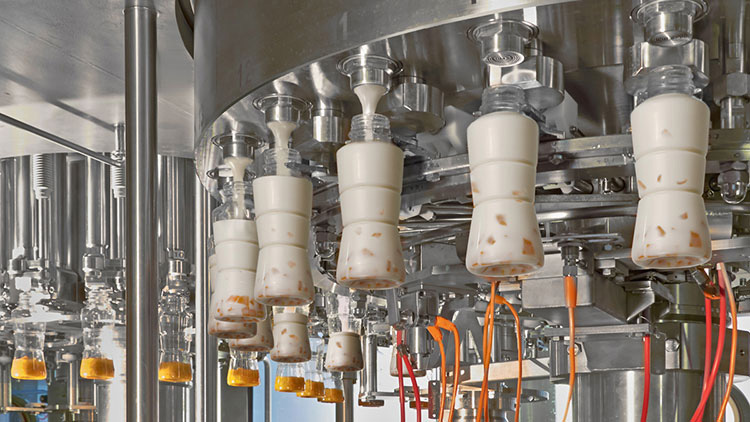
In the food and beverage sector, liquid fillers are used to pack liquid food products like juices, sauces, dairy products, and other liquid food items into cans, bottles, and jars.
Pharmaceutical Industry
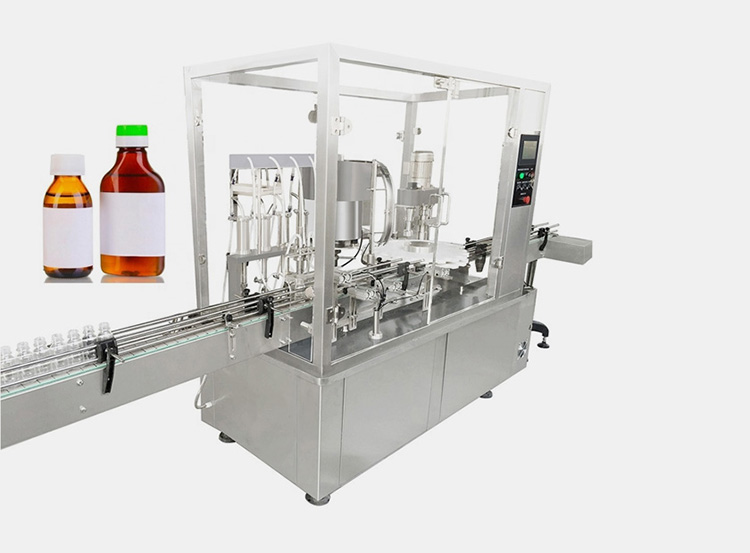
Also, liquid fillers can be used in pharmaceuticals for packaging liquid medicines such as syrups or suspensions. They can also be used to dispense liquid medications that require precise doses.
Cosmetic Industry
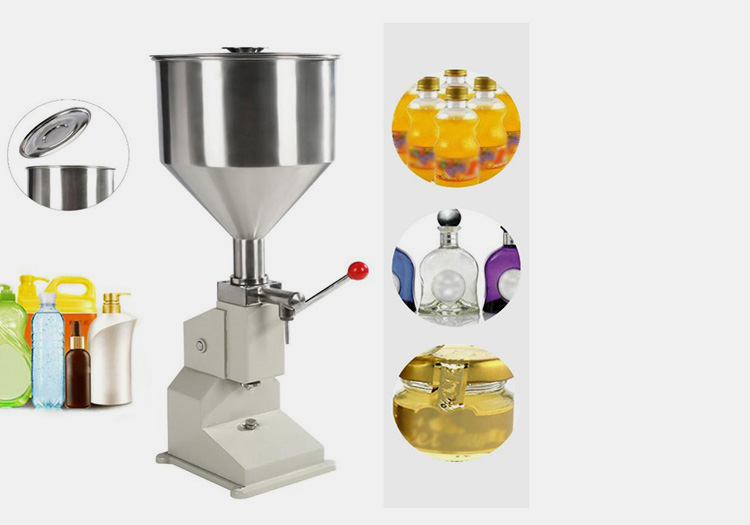
When it comes to the cosmetic industry, liquid fillers are used to package liquid makeup such as foundations and lipsticks. They also help dispense liquid skincare products such as creams, lotions and gels.
Personal Care Products
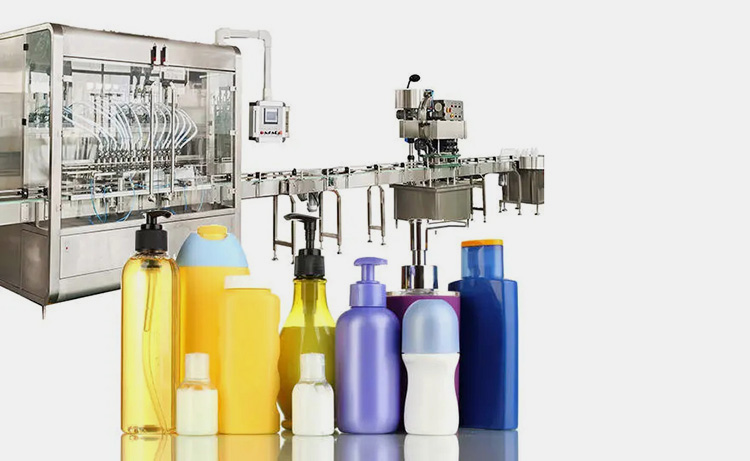
Liquid fillers are also used in personal care products including liquid soap, lotion, and shampoo. The liquid fillers used in this business need to be accurate to the highest standards and able to manage a variety of viscosities.
Chemical Industry
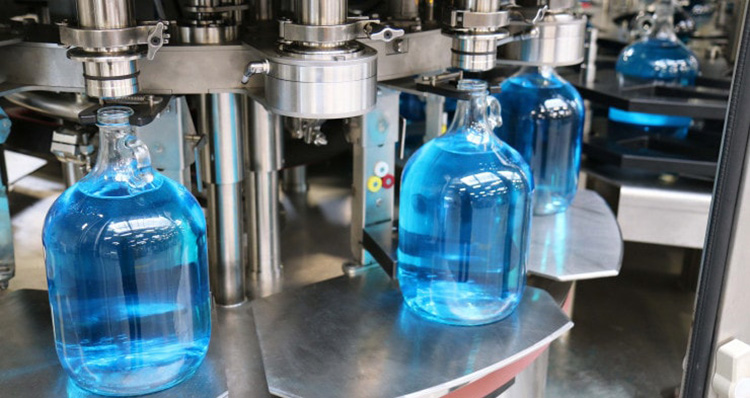
Liquid detergents and cleaners are filled with liquid fillers in order to package them efficiently and safely. The liquid fillers used for detergents must be corrosion-resistant as some of the ingredients can corrode certain metals.
5.How Does A Liquid Filler Work?

A liquid is first added to the hopper of a liquid filler, which then feeds the fluid to a metering device, to start the operation. The volume of liquid that will be dispensed into each container will subsequently be measured and controlled by this device.
Following that, the fluid is moved to the filler’s valve, where it is kept until it is released into a container. The container may be sealed with a mechanical cover or a thermal seal after the liquid has been dispensed into it. Any extra liquid is then collected in a waste tank and disposed of.
6.What Are Different Liquid Filling Systems That Are Present In A Liquid Filler?
a) Volumetric Filling System
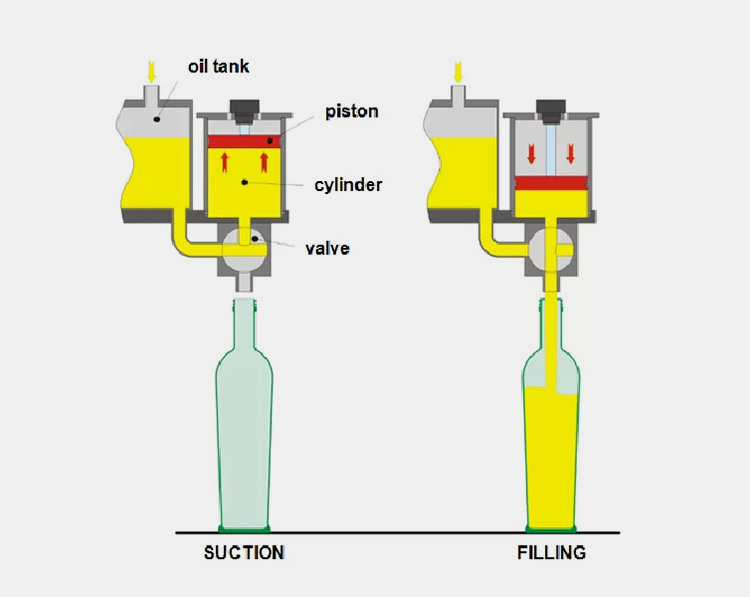
This liquid filling system uses a certain amount of liquid in each container and the volume is adjusted by controlling how much liquid per cycle is dispensed into each bottle or container that passes through the liquid filler.
b) Component Counting System
This liquid filling system works by counting out the components that need to be filled with liquid, such as ampoules, vials, capsules and other containers. The liquid filler then uses a certain amount of liquid for each component and fills it based on how many pieces there are in the container.
c) Net Weight Filling System
Net weight filling system works by weighing out the liquid and then filling the liquid container based on its pre-determined weight. This liquid filler works by ensuring that each bottle or container is filled to its exact net weight of liquid.
c) Gravimetric Filling System
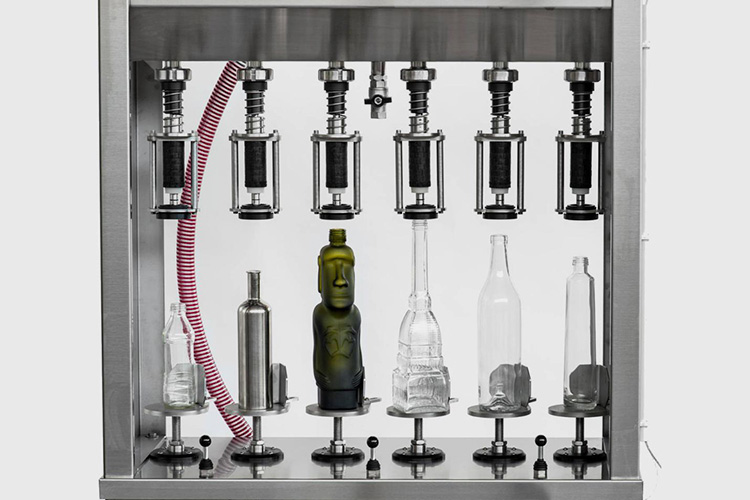
Gravimetric filling system works by using an electronic sensor to measure the liquid’s density and fill it into a bottle or container based on the liquid’s density. This liquid filler is used for more precise liquid filling operations and is suitable for liquids with different densities.
d) High Speed Rotary Filling System
This liquid filling system works by using a high speed rotary motion to fill liquid containers quickly and accurately. This liquid filler uses multiple pumps, nozzles and an automated process to fill liquid containers in a fast and efficient manner.
e) Servo-Driven Piston Filling System
Servo-driven liquid filling system works by using servo motors to precisely control piston movement and therefore the amount of liquid that is dispensed into a bottle or container. This liquid filler is ideal for liquid filling operations that require high levels of accuracy and precision.
f) Peristaltic Filling System
Peristaltic type of liquid filling system works by using an automated peristaltic pump to accurately fill liquid containers without spilling or wastage. This liquid filler is commonly used in pharmaceutical, food and beverage industries due to its accuracy and reliability.
7.What Are The Different Types Of Liquid Fillers?
There are several different types of liquid fillers including:
Manual Liquid Fillers
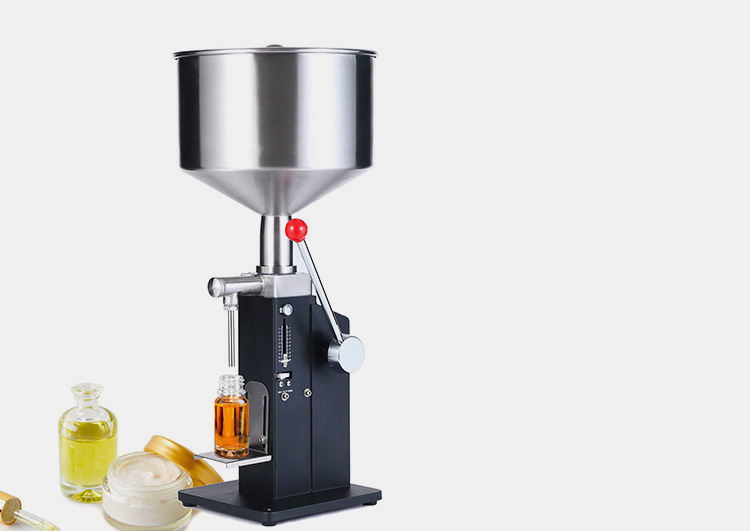
Manual liquid fillers are operated by hand, and are often used for low-volume liquid filling applications. These liquid fillers typically contain manual dosing pumps or syringes to dispense the liquid into containers.
Semi-Automatic Liquid Fillers
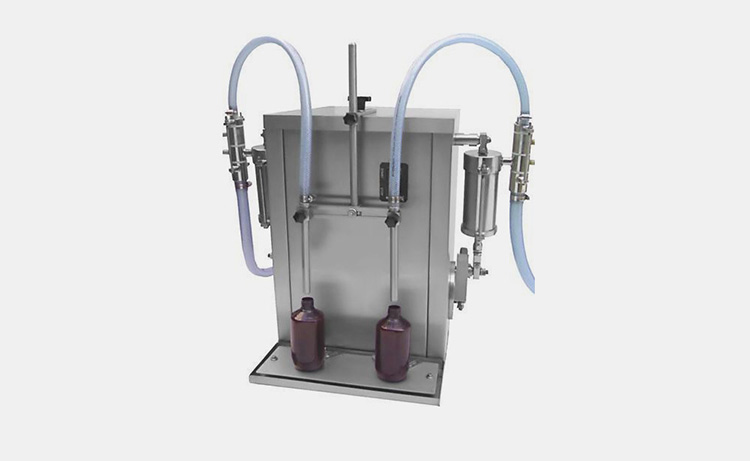
Semi-automatic liquid fillers are semi-automated and use a combination of manual and automated components to fill liquids into containers. Typically, these liquid fillers have an automated portion to dispense the liquid, and then a manual component for operators to complete the filling process. This type of device is often used for medium-volume liquid filling applications.
Automatic Liquid Fillers
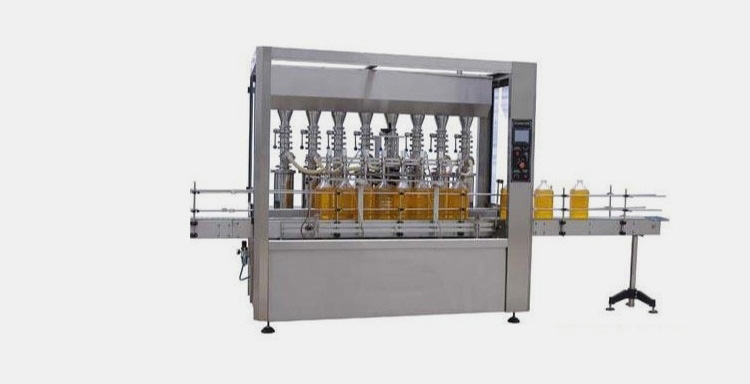
Automatic liquid fillers are fully automated and use a combination of sensors, pumps, valves, and other components to accurately dispense liquids into containers. This type of liquid filler is ideal for high-volume liquid filling applications as it has the highest accuracy.
Paste Liquid Filler
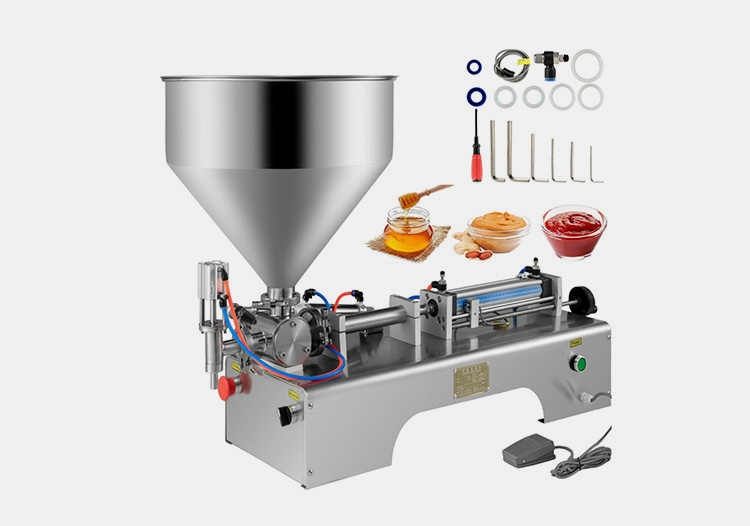
A paste liquid filler machine uses a piston, peristaltic pump or gear pump to dispense liquid product into containers. They are typically used for viscous products such as sauces, pastes, dressings and jams.
Gravity Liquid Fillers
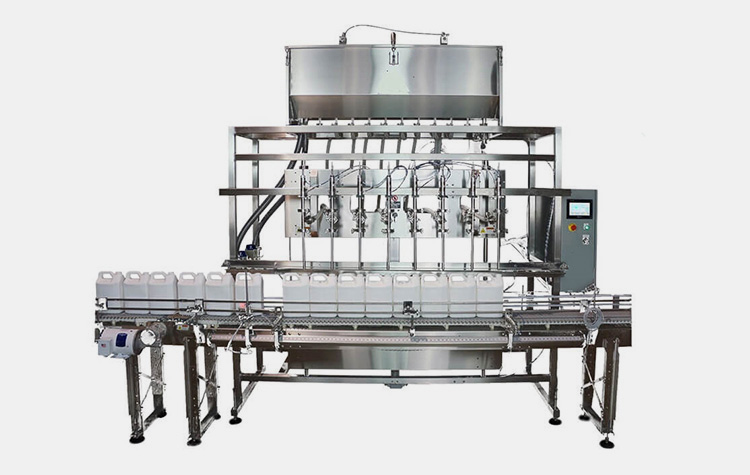
A gravity filler is a liquid filling machine that uses the force of gravity to dispense liquid into containers. Gravity fillers are typically used for lower viscosity liquids such as water, juices, liquid soaps and detergents. This type of liquid filler is relatively inexpensive and easy to use.
Pneumatic Liquid Filler
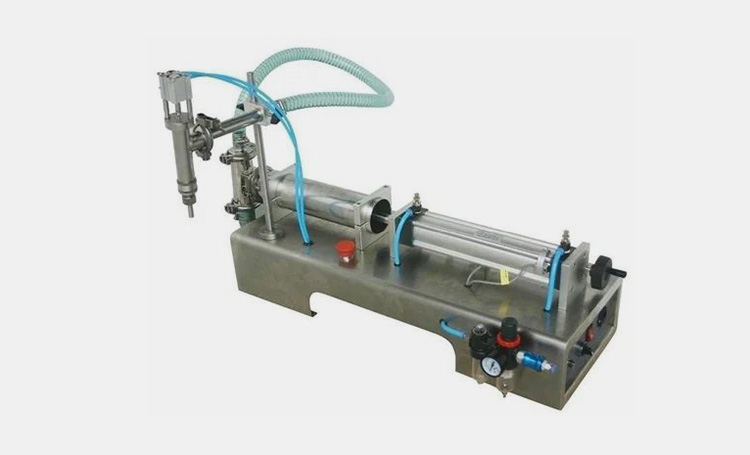
pneumatic liquid filling machine: A pneumatic liquid filling machine uses compressed air to push liquid product into containers. They are typically used for liquid products such as water and solvents.
Inline Liquid Filler

An inline liquid filler machine uses a liquid-filling head to dispense liquids into containers. They can be used for liquid products such as syrups and edible oils.
Rotary Liquid Filler
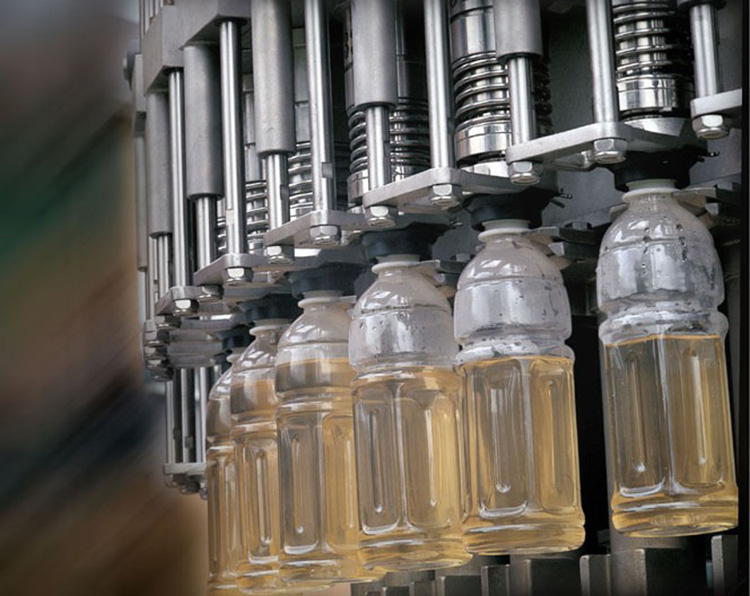
A rotary liquid filler machine uses a liquid-filling head to dispense liquid product into multiple containers. They are typically used for liquid products such as beverages, detergents and lubricants.
8.What Is The Difference Between A Manual Liquid Filler And An Automatic Liquid Filler?
a) Manual Liquid Filler
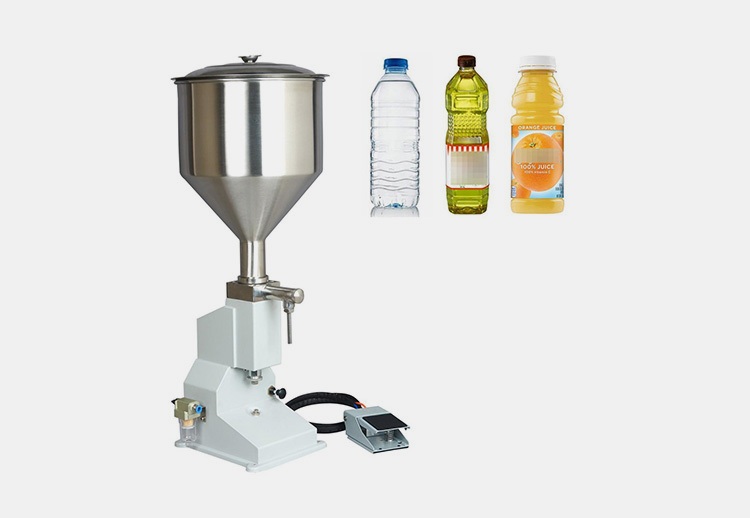
b) Automatic Liquid Filler
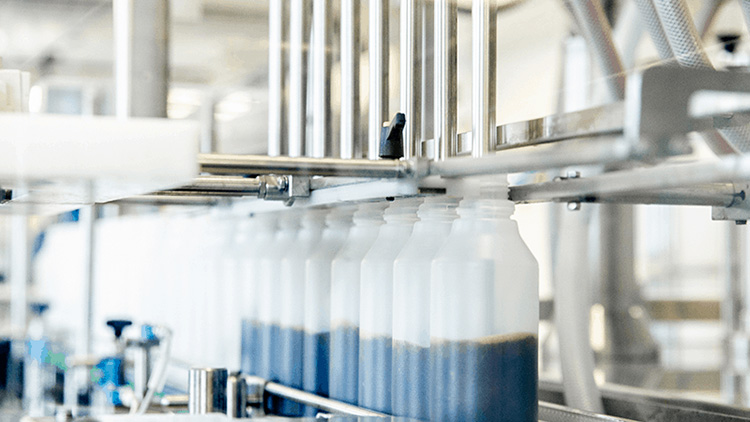
A manual liquid filler is a manual system which requires manual intervention to fill bottles with liquids. This type of system is generally much slower than an automatic liquid filler, as it relies on manual labor to operate the equipment.
An automatic liquid filler, on the other hand, uses automation in order to fill bottles with liquids at a much faster rate than manual liquid fillers. Also, automatic liquid fillers come with more features, like programmable operations which allow for the adjustment of the filling speed and flow rate depending on the type of bottle being filled.
9.What Is The Difference Between An Automatic Liquid Filler And A Semi-Automatic Liquid Filler?
a) Automatic Liquid Filler

b) Semi-Automatic Liquid Filler
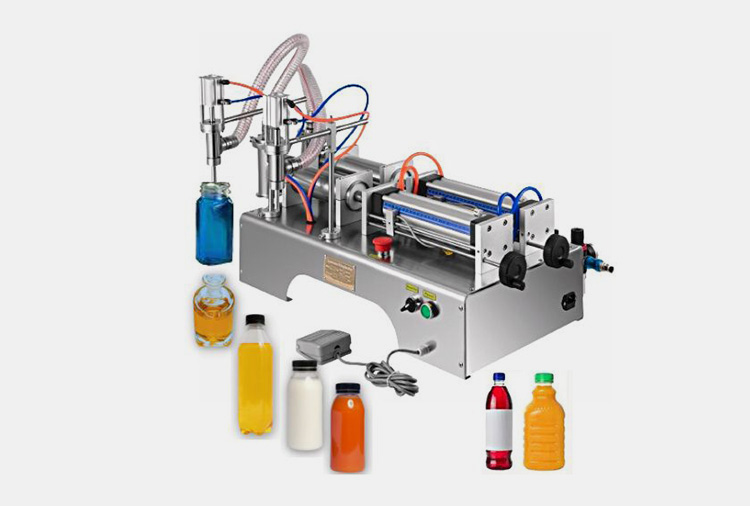
The main difference between automatic and semi-automatic liquid fillers is the level of automation that each type offers.
Automatic liquid fillers are fully automated, requiring only minimal human intervention for operation, whereas semi-automatic liquid fillers require more manual labor and effort to operate.
In addition, automatic machines are often able to fill containers at much faster speeds than their semi-automatic counterparts.
In terms of cost, automatic liquid fillers tend to be more expensive than semi-automatic machines. This is due to the fact that automatic machines are typically larger, require more complex parts and motors, and consume more electricity.
Additionally, automatic liquid fillers often come with advanced features such as automatic weight adjustment or product recognition technology which can increase their price even further.
10.What Type Of Liquids Can Be Filled Using A Liquid Filler?
Different types of liquids can be filled using a liquid filler, including:
Water

The most typical liquid that can be filled with a liquid filler is water. It is commonly used to fill water bottles in sectors like the food and beverage industry.
Oils
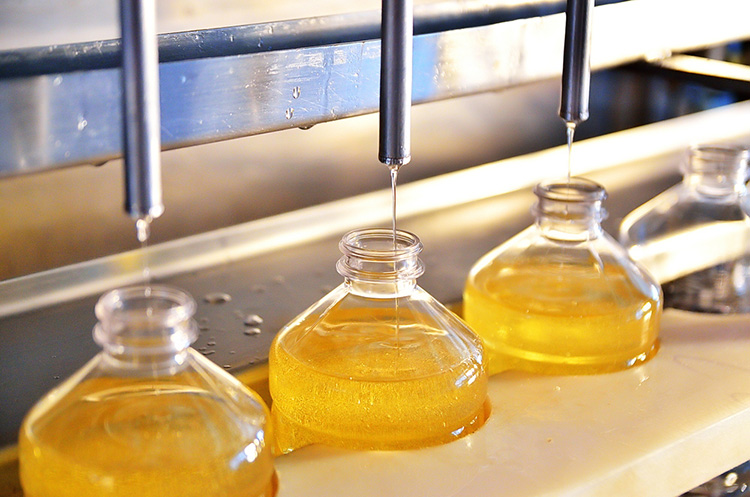
Oils are also commonly filled using liquid fillers. This includes cooking oils as well as other types of plant and animal based oils.
Juices
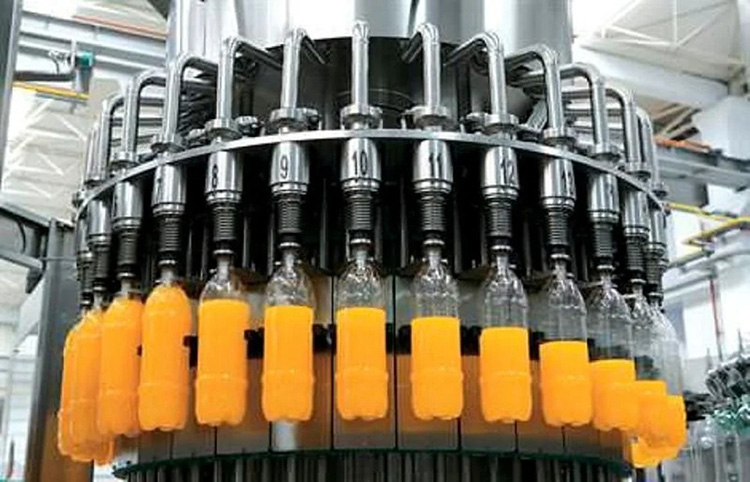
You can also use a liquid filler to fill bottles with various juices, including orange juice, apple juice, and others.
Pharmaceuticals
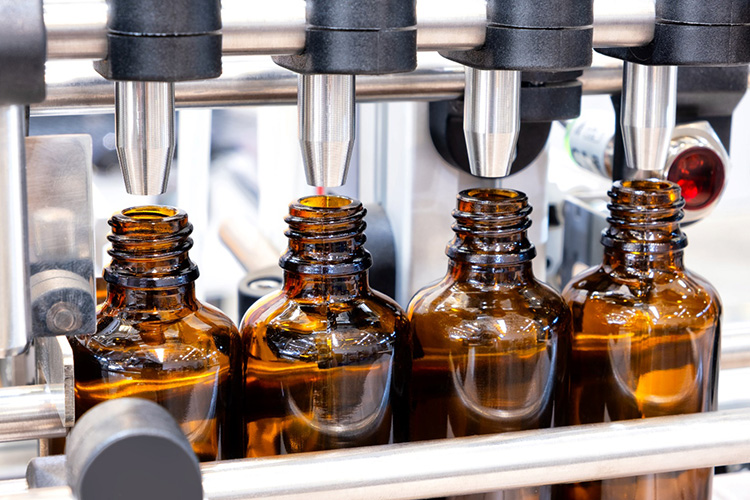
Pharmaceutical liquids can be filled into containers either individually or in bulk using liquid fillers.
Alcoholic Beverages

Alcoholic liquids like beer and wine are also filled into bottles using liquid fillers.
Sauces
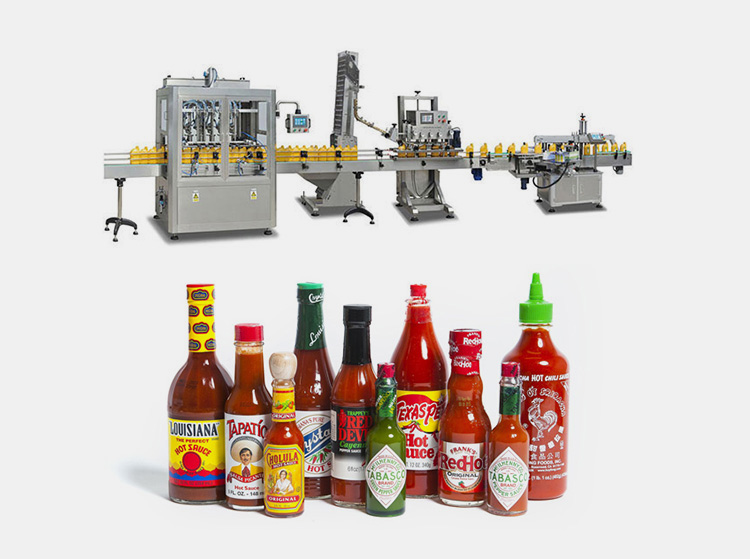
Sauce containers can also be filled using liquid fillers. This includes sauces such as ketchup, mustard, and BBQ sauce.
11.Are Liquid Fillers Compliant With Applicable Regulations And Standards?
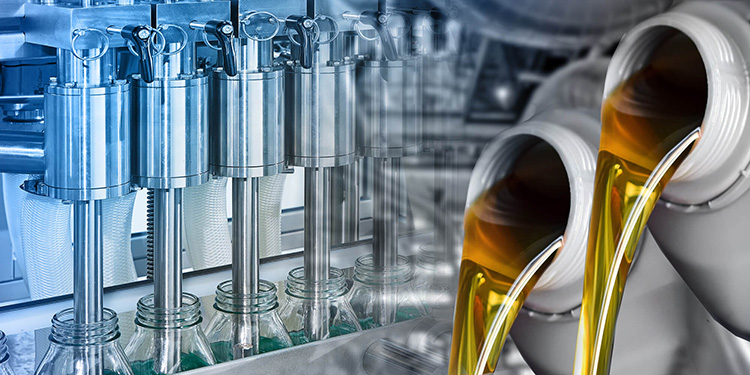
Yes! Liquid fillers must adhere to the rules and specifications established by the many regulatory organizations, including the US Food and Drug Administration (FDA), the European Union (EU) Cosmetic Regulation, and other regional agencies.
In addition, manufacturers must follow Good Manufacturing Practices (GMPs), which set criteria for quality control, product purity, and production management, to guarantee that liquid fillers satisfy all requirements.
Liquid fillers must also be evaluated to make sure they adhere to a variety of health and safety laws, such as those governing the use of hazardous substances or particular chemicals in commercially available products.
All in all, liquid fillers must adhere to all rules and specifications to guarantee customer safety. To stay compliant, manufacturers must also be informed of any modifications to these rules or requirements.
12.Are Liquid Fillers Suitable For All Liquid Types?
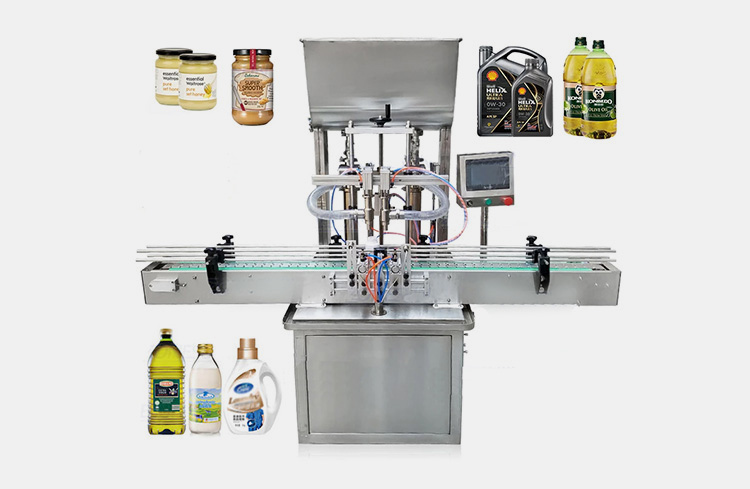
The variety of liquid types that liquid fillers can normally handle depends on the viscosity, surface tension, and other characteristics of the liquid you are filling. It’s crucial to conduct research to identify the liquid filler that best suits the requirements of your liquid because some liquid fillers might be more appropriate for particular liquid kinds than others.
Moreover, certain liquid types may require additional attachments like pumps or valves for liquid fillers in order to manage them. In the end, liquid fillers are a terrific way to properly and efficiently fill liquids of various kinds, but be sure to pick one that is appropriate for your needs.
13.What Type Of Packaging Materials Can Be Used With A Liquid Filler?
Using liquid fillers requires very particular types of packaging materials. Here are a few common options for liquid filler applications:
Glass Bottles
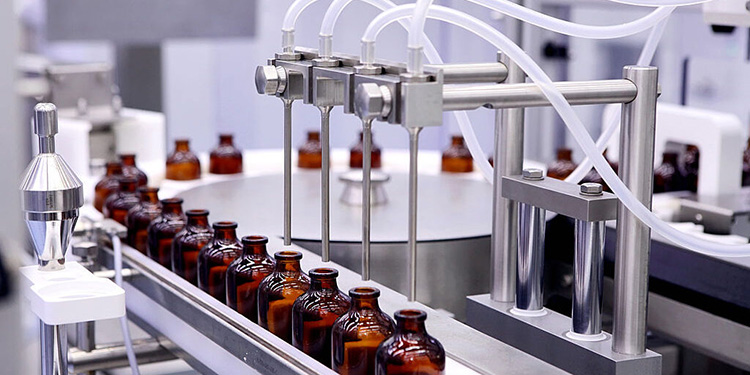
Glass bottles provide reliable, safe and long-term protection to liquid products as they are impermeable and highly resistant to contamination.
Plastic Containers
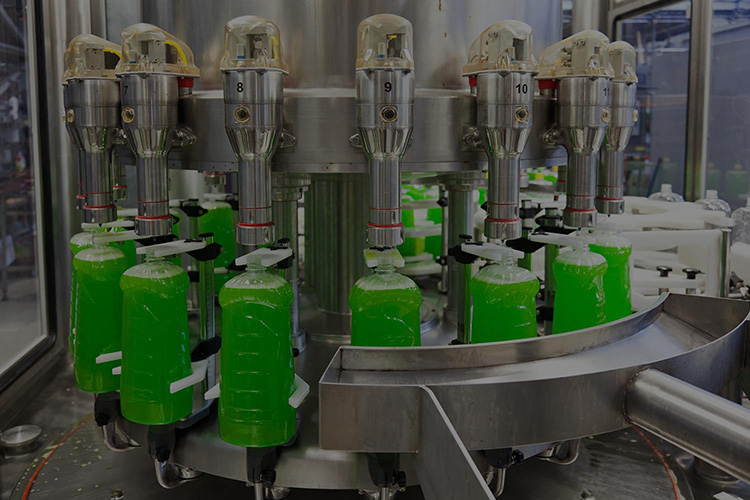
Also, plastic containers offer flexible packaging options and are light and cost-effective. They can be shaped in many different forms to fit liquid products, and are generally easier to store than glass bottles.
14.What Are The Common Problems Associated With Liquid Fillers And Their Possible Solutions?
Common problems associated with liquid fillers and their possible solutions include:
Leakage

Liquid fillers can sometimes experience leakage issues due to cracks or wear and tear in the machine, which can lead to product loss and contamination
Possible Solution
Regularly inspect liquid filler machines for signs of damage, and repair any cracks or other damage as soon as possible.
Contamination

Liquid fillers can be prone to contamination if the liquid being filled is not handled or stored properly.
Possible Solution
The use of hygienic materials and processes, such as proper cleaning and sterilization of containers and liquid handling equipment, can help reduce the risk of contamination.
Overfilling
Sometimes, liquid fillers can be prone to overfilling, leading to product waste or potential safety issues.
Possible Solution
Investing in automated liquid fillers with adjustable settings can help ensure liquid levels are always within the desired range.
Low Fill Accuracy

Liquid fillers can sometimes experience issues with low accuracy, meaning filled containers may not be properly filled to the right level.
Possible Solutions
By investing in liquid fillers that have higher accuracy rates, this issue can be addressed and minimized.
15.What Are The Considerations Before Making A Purchase Of A Liquid Filler?

When buying liquid filler, there are several considerations to keep in mind. They include:
Cost
First and foremost, it’s important to consider your budget because liquid fillers come in a range prices. So make sure you choose a liquid filler that lies within your budget.
Speed
Taking into account the speed of the liquid filler is also important. While slower liquid fillers might be more suited for small-scale liquid filling operations, faster liquid fillers might help shorten production times.
Size and Capacity
The liquid filler’s size and liquid filling capacity should be appropriate for the amount and type of liquid being filled. When working with huge volumes, it’s crucial to take high liquid filling capacity liquid fillers into consideration.
Brand Reputation
Also, liquid fillers come from a range of brands, each with their own reputation. Always read customer reviews to get an idea of how reliable a liquid filler is before making your purchase.
CONCLUSION
It is easy to see the many advantages that a liquid filler can bring to the industries they are used in. Not only do they save time but also money because of their cost-effective operation and precise design. Furthermore, materials like liquids, pastes and creams can be efficiently filled with this technology. For these reasons, more and more industries are investing in liquid filler. If you’re interested in purchasing a quality liquid filler that fits your production needs, contact Allpack today!
Don't forget to share this post!
CONTACT US
Tell us your raw material and project budget to get quotations within 24 hours.
WhatsApp Us: +86 181 7101 8586
The Buyer's Guide

